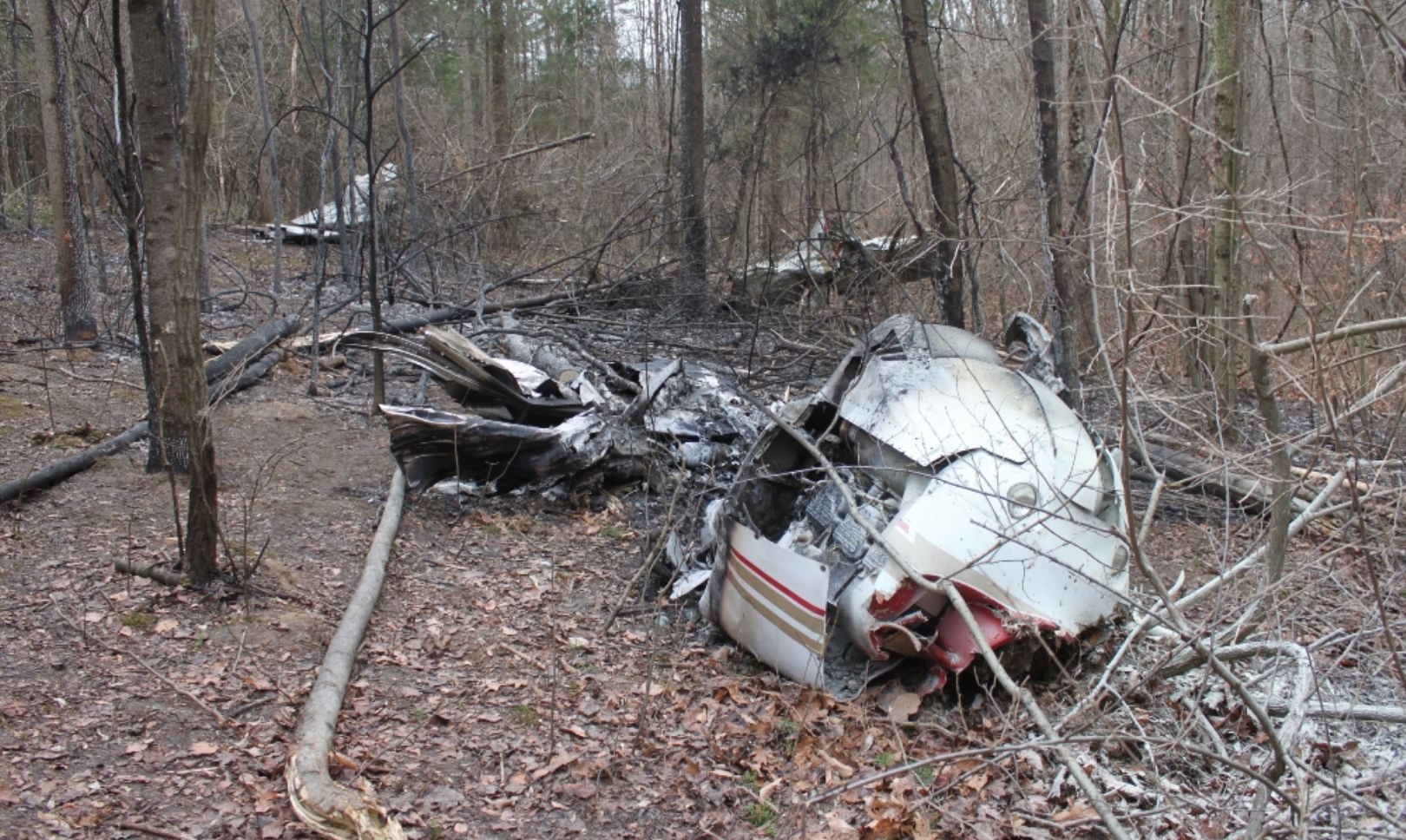
ASN Wikibase Occurrence # 203037
This information is added by users of ASN. Neither ASN nor the Flight Safety Foundation are responsible for the completeness or correctness of this information.
If you feel this information is incomplete or incorrect, you can submit corrected information.
| Date: | Saturday 16 December 2017 |
| Time: | 20:57 |
| Type: |  Cessna T210M Turbo Centurion |
| Owner/operator: | Private |
| Registration: | N761YZ |
| MSN: | 21062637 |
| Year of manufacture: | 1978 |
| Total airframe hrs: | 4905 hours |
| Engine model: | Continental TSIO-520 SER |
| Fatalities: | Fatalities: 3 / Occupants: 3 |
| Aircraft damage: | Destroyed |
| Category: | Accident |
| Location: | W of Oldenburg, Franklin County, IN -
 United States of America United States of America
|
| Phase: | Approach |
| Nature: | Private |
| Departure airport: | Columbus Municipal Airport, IN (CLU/KBAK) |
| Frederick Municipal Airport, MD (FDK/KFDK) | |
| Investigating agency: | NTSB |
| Confidence Rating: |
The airline transport pilot and two passengers, one of whom was pilot-rated, were conducting a cross-country flight in dark, night visual conditions. During an en route climb to the assigned cruise altitude, the airplane experienced a loss of engine power about 6,600 ft above ground level (agl). The pilot identified a diversionary airport located about 4 miles northeast of the airplane's position and subsequently established a course toward that airport. The air traffic controller immediately informed the pilot that the airport was closed. However, based on the pilot's stated intention to divert to the airport, the controller provided radar vectors to assist the pilot. The airplane subsequently overflew the airport about 3,000 ft agl. However, instead of circling the airport, the pilot continued about 1 1/2 miles north and entered a right gliding turn until the airplane impacted trees and terrain about 2 miles north of the airport.
A postaccident airframe examination did not reveal any anomalies consistent with an airframe structural failure or a malfunction of the flight control system. An engine examination revealed that the No. 4 piston had failed. Specifically, the perimeter of the No. 4 piston crown had separated, resulting in the separation of the upper compression ring and compression ring insert. Metallurgical examination determined that the piston failure was caused by the disbonding of the upper piston ring insert from the piston body. Lead deposits were present on parts of the piston body that formed an interface with the insert. The deposits were abraded in areas exposing the underlying piston material. The abraded areas where the deposits had been worn away could only have occurred if the upper piston ring insert had disbonded from the piston body before the piston failed. The disbonding of the insert was likely caused by a manufacturing anomaly; however, due to the extensive damage to the piston and the insert, it was not possible to determine with any more precision where the failure started or the nature of the defect that might have caused it.
An airplane performance study revealed that no airports other than the diversionary airport were within the power-off glide range of the airplane at the time of the loss of engine power. Thus, the location of the airplane at the time of the loss of engine power presented the pilot with limited options for a forced landing. Furthermore, the pilot's ability to discern a suitable off-airport landing area was hindered by the dark night lighting conditions. Although, an interstate highway was below the airplane, attempting to execute a forced landing on an unlighted roadway at night presented significant hazards. In contrast, approach paths to an airport are generally free of obstructions. Therefore, the pilot's decision to alter course toward the diversionary airport, even though it was closed and unlighted, was understandable. However, once the airplane was positioned over the airport, the pilot did not circle but continued to fly north into an area with more limited opportunities for a successful forced landing.
Probable Cause: A total loss of engine power due to the failure of the No. 4 piston, which resulted in an attempted forced landing in dark night conditions and a subsequent in-flight collision with trees and terrain. Contributing to the accident were the pilot's situational stress and fatigue, both of which degraded his performance.
Accident investigation:
 |
|
Sources:
NTSB
https://flightaware.com/live/flight/N761YZ
FAA register: http://registry.faa.gov/aircraftinquiry/NNum_Results.aspx?NNumbertxt=N761YZ
Location
Images:

Photo: NTSB
Media:
Three people/one dog were killed in Franklin Co plane crash. One dog survived. Plane was single engine Cessna going from Missouri to Maryland. ISP is working with FAA and NTSB. News Release will be sent out later today. My thoughts and prayers go out to the victims\' families.
— Sgt. Stephen Wheeles (@ISPVersailles) December 17, 2017
Revision history:
| Date/time | Contributor | Updates |
|---|---|---|
| 17-Dec-2017 08:17 | Iceman 29 | Added |
| 17-Dec-2017 08:17 | Iceman 29 | Updated [Embed code, Narrative] |
| 17-Dec-2017 16:01 | Geno | Updated [Time, Aircraft type, Registration, Cn, Operator, Total occupants, Other fatalities, Location, Phase, Nature, Departure airport, Destination airport, Source, Damage] |
| 17-Dec-2017 17:57 | Iceman 29 | Updated [Embed code] |
| 17-Dec-2017 17:59 | Iceman 29 | Updated [Narrative] |
| 19-Dec-2017 18:23 | Aerossurance | Updated [Operator, Location, Nature, Source, Damage, Narrative] |
| 22-Jul-2019 18:51 | ASN Update Bot | Updated [Time, Departure airport, Destination airport, Source, Embed code, Narrative, Accident report, ] |
| 22-Jul-2019 20:12 | harro | Updated [Departure airport, Destination airport, Source, Embed code, Narrative, Photo] |
| 22-Jul-2019 20:12 | harro | Updated [Phase] |
Corrections or additions? ... Edit this accident description
The Aviation Safety Network is an exclusive service provided by:


 ©2024 Flight Safety Foundation
©2024 Flight Safety Foundation